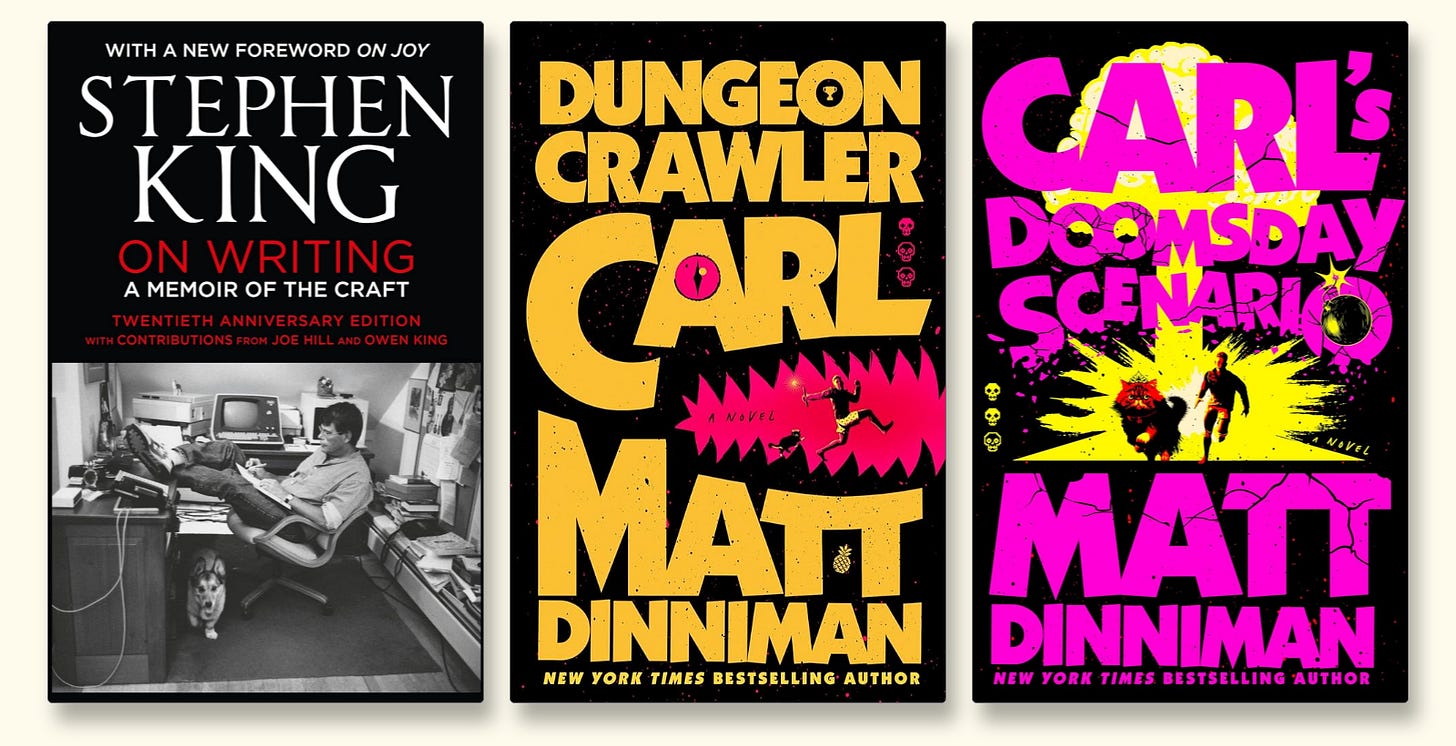Skillbuild #4 – Blog Deployed & Essay Mutations
Built one thing, broke another. Plenty of takeaways
Welcome to Skillbuild — weekly notes on rapid learning and building skills.
This week:
🤖 Vibe Coding: lessons from launching my blog with AI and switching frameworks
✍️ Writing Practice: when one essay becomes three
📚 Books I read: On Writing - Stephen King, Dungeon Crawler Carl 1&2
Skill check: Vibe coding
✅ Project 1: Code personal blog
I finally built my blog using AI.
A blog is nothing fancy, but it was a solid learning project and I’m genuinely happy with the result because I’ll actually use it.
Coming from WYSIWYG editors like Webflow, I had to get comfortable coding in plain text and navigating the terminal. But after a few weeks of diving in, I’m much more fluent with Cursor. The ability to explain lines of code inside the editor and provide recommendations makes the learning cycles really fast.
Shotgun learnings
Pick your frameworks wisely
I started with Next.js with App Router. That’s what Nat Eliason used and seemed like the most stripped-down option for robustness and speed. But I failed twice trying to add basic features and gave up. Eventually, I switched to Astro—a front-end web framework—that’s way more forgiving and still fast and flexible. It ended up saving me hours because I could avoid…
Tweaking hell: with Next.js, every time I wanted to refresh the site and test minor design changes, it mean restarting the server. You enter:
npm run dev, refresh, tweak a few pixels and then have to repeat ad infinitum. Nightmare. Astro, on the other hand, hot-refreshes the page as you edit. I don’t think it’s intentionally WYSIWYG, but it pretty much is. It’s a total game changer for my design-and-adjust workflow.
Inspect and edit
AI is great for building the big blocks and overall features, but garbage for minor edits. The Chrome inspect tool is a must-learn to get the CSS right. Manually adjusting the CSS gives you more control. And it was actually faster.
Build like a dev
When I started, I was going around working on parts of the blog at random. It worked, but the dabbling started to make me feel like “there’s so much to do still”.
Once I made a proper task list—pages, sections, animations—things became smooth. No more cycles of pausing to think “what do I do next?” I just followed-through with my plan. Who knew basic project management actually works?
There’s a flow-state to vibe coding when you do it this way, if you happen to not hit too many bugs along the way you can easily clear through an entire list of features in a matter of hours.
Next steps
I’ll be hosting the blog soon, once I’ve added the content and finalised any bugs.
I plan to build an app next. But I’m still deciding what direction to take:
A tool to help me process book notes faster - reducing friction from reading to insight.
A tool to turn the skills you’re learning into a skill tree - fun idea but not sure if possible.
Rebuilding an internal tool for my business - a lightweight stock manager for retail staff.
Skill check: Writing
✅ Published 1 Article
This week I wrote a piece about learning systems that expanded way beyond what I intended. The thesis fell apart midway through and I started drafting other pieces. The whole thing spiralled into chaos.
The good news is I ended up deciding to split it into three pieces which were each publishable so I now have spare ammo for next week. The bad news was that it was a frustrating week of wandering. But I had plenty to take away from this.
Shotgun learnings
Split the piece before it eats you
There were too many ideas jammed into one article and it quickly became hard to write. Splitting it into three made it:
Manageable - less time fiddling with idea sequence
Explorable - fewer ideas meant readers aren’t overloaded
Stronger - each idea has it’s own space and supporting stories
I’m writing smaller pieces, but I’m starting to understand how hard books would be to write. Move one paragraph and the whole narrative shifts. Without a strong thread, editing turns into wandering.
Find your thesis, or realise you don’t have one
I was laying ideas down left and right and just… kept writing. The article kept expanding and shrinking and eventually, I couldn’t tell if I was still writing the same article I started—or something entirely different. I’m calling this the “Essay mutation problem.”
I experienced the principle: writing IS thinking. If you’re rambling, it means your thesis isn’t clear.
David Perell’s advice helped: write a one-paragraph summary from memory. When I did that, the core message felt weak—which told me it needed work. I repeated this a few times and each pass helped clarify the thesis.
Ask: How many concepts are you asking the reader to hold?
The original draft was too dense. Every section had multiple sub-concepts. While writing, I was focused on Zinsser’s advice to be short as possible. But I realised something unexpected: if you compress too tightly people don’t have space to actually understand the ideas.
Trimming makes it sharper, but when you have so much to tell, people don’t have time to grasp the concepts—this is also a loss. That’s why breaking it into three made each piece lighter and more readable, without losing the nuance.
When the theme doesn’t show up
The piece started with a fun idea: Learning as an RPG. But I spent 1500 words simply framing the problem before even mentioning RPGs.
At that point, the framing had taken over the piece. So I split the article, dropped the RPG angle from part one, and saved it for parts two and three—where I think it could have it’s own space to shine.
This piece took way longer than expected. There were days I just wanted to publish as-is to get it out of my face. But I’m glad I stuck with it and keep working through it. The modular structure feels right, each part stands alone, or can be read as a part of a bigger system.
Books I read this week
On Writing by Stephen King (5⭐) A great blend of memoir and writing advice. King started writing very early and is now prolific, but he also did the hard work. So the wisdom feels earned and endearing. You can tell his opinions come bullshit-free. A must read for any writer, fiction or not.
Dungeon Crawler Carl by Matt Dinniman (4⭐) This was recommended by a friend. At first I thought it was very over the top—but that turns out to be the charm. The main characters are surprisingly great. Once you accept it for what it is, it’s genuinely fun and hard to put down.
Carl’s Doomsday Scenario by Matt Dinniman (3.5⭐) Book two in the series. Also a lot of fun, but a bit weaker than the first. It holds up, even if the momentum dips slightly.






